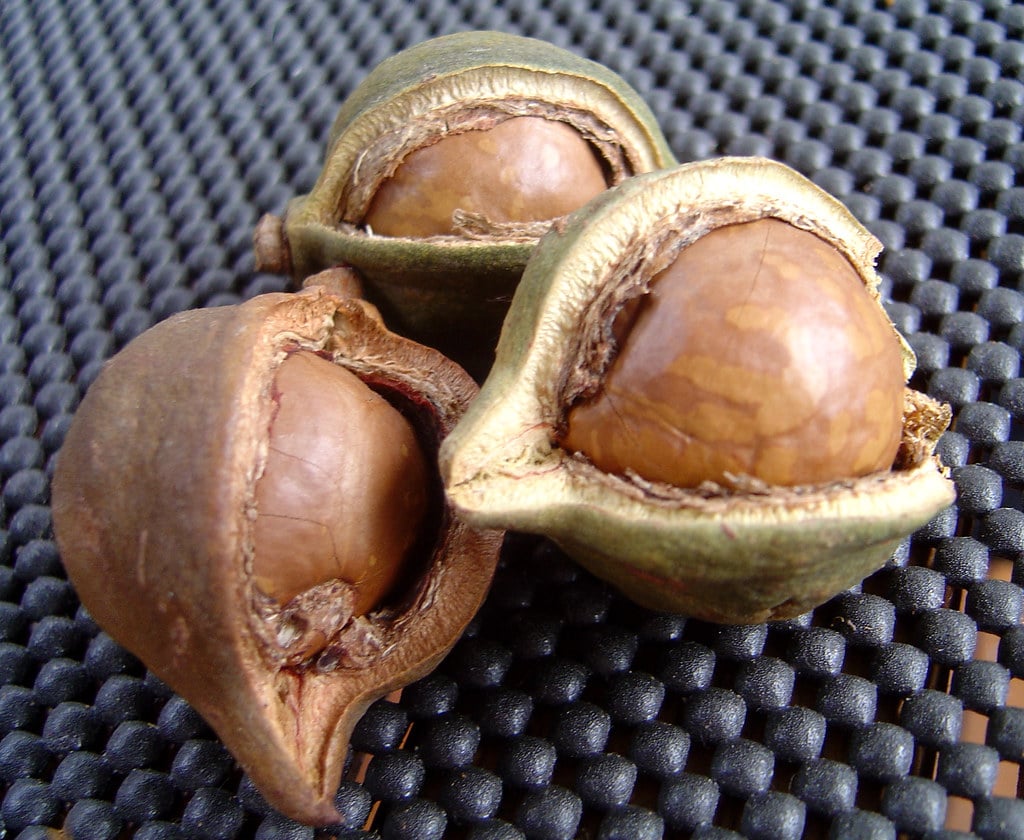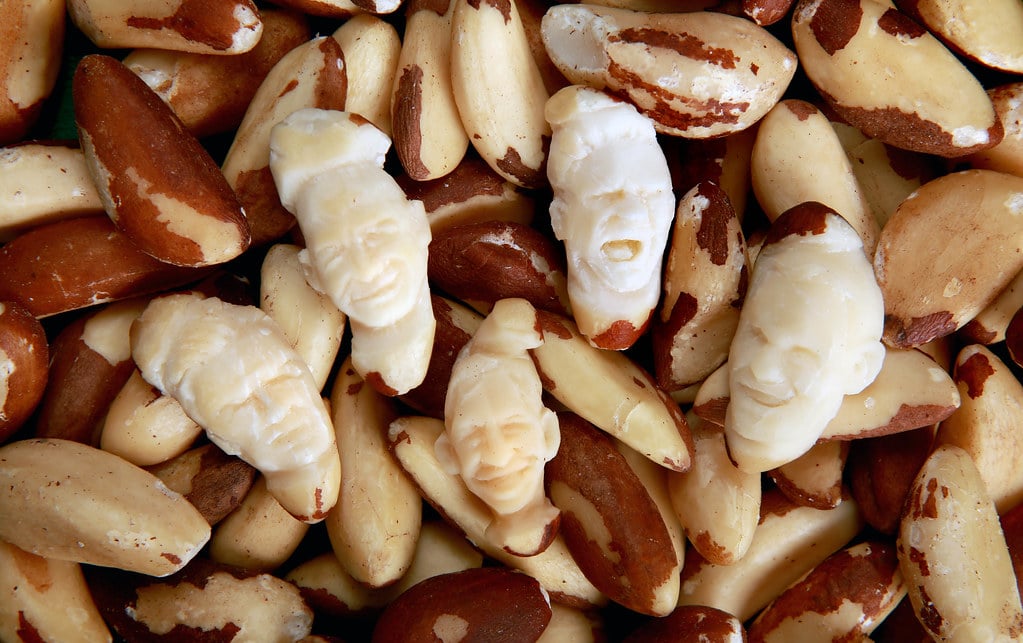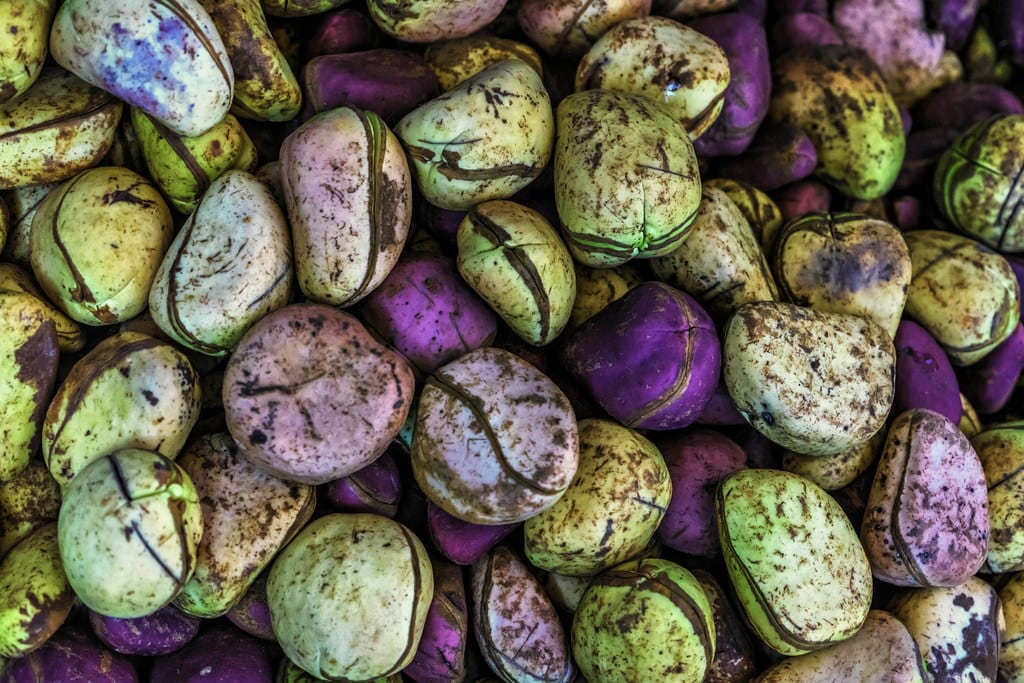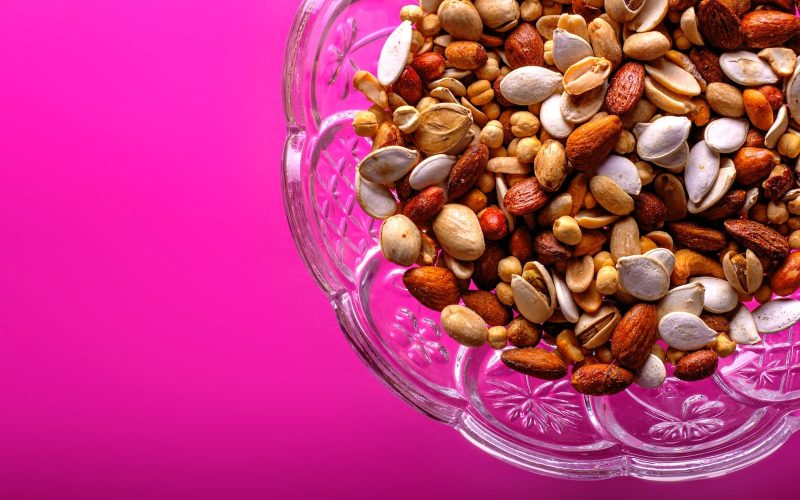Do you know that there are over 20 different types of nuts? Nuts are tasty, easy to eat, high in good fats, and contain important vitamins and minerals.
Some of the popular ones are peanuts, walnuts, and almonds.
Not all nuts are edible, but most add flavor and texture to our pasta, cookies, chicken, and beef recipes!
Once the ovary hardens, ripens, and transforms into a hard shell, most nuts are grown worldwide.
The fruit’s seed, or kernel, grows inside the shell. Many tree nuts, like almonds and hazelnuts, begin life as lovely flowers.
It’s a healthy snack alternative for many people, while some love to include it in their meals.
Now, let’s look at the types of nuts we have and their nutritional facts.
1. Cashew

The main growing region for cashews is the wet and dry tropics. The cashew fruit, which includes nuts, grows on trees.
You should prepare cashews cautiously. Their outermost shell contains an acidic liquid that, if in direct contact with the skin, can cause severe burns.
There are several methods for getting the delicious nut out without getting the juice on you.
You can roast them in oil to separate the nut from the shell, freeze them, and then remove them with gloves.
Due to their advantages as antioxidants, cashews are widely used in various ways.
They also include a lot of magnesium, which improves joint flexibility.
2. Walnuts

This is also among the different types of nuts that are usually sold in its shell. As a result of their hard shell, these walnuts might be difficult to eat.
Buying the shelled type is most likely the simplest approach to increasing your intake of walnuts.
According to studies, eating walnuts may help reduce your risk of cardiovascular problems.
In one study, increasing the number of walnuts consumed for six months resulted in lower cholesterol, blood pressure, and blood sugar levels.
Walnuts also have anti-inflammatory and antioxidant qualities, another benefit of consuming them.
A diet high in walnuts supports brain function and slows the effects of aging.
3. Almonds

Almonds are among the healthiest nuts because they’re loaded with nutrients.
Depending on how you wish to eat this healthy nut, you can get white-blanched almonds, almond flakes, and dry-roasted almonds.
Almond consumption can lower the risk of type 2 diabetes, among other health advantages.
It can also reduce insulin levels and stop blood glucose spikes after meals.
An excellent strategy to increase your diet’s fiber and antioxidant content is to munch on almonds.
In addition, eating almonds is a healthy source of energy that can keep you feeling fuller for a longer time.
As a result, almonds might be a nice nut to munch on if you’re trying to lose weight.
4. Peanut

Among the different types of nuts is the peanut. Contrary to popular belief, the peanut grows underground.
Peanuts grow underneath the plant as it blooms above ground. They should be picked, cleaned, and left to dry in the sun before being consumed.
You can shell them immediately, or the shell can be left on and removed later.
Also, you can eat them once you remove the shell. Some prefer to boil or roast them while flavoring them with seasoning.
5. Macadamia Nuts

Macadamia nuts are becoming an increasingly important commodity in South Africa and Kenya, where they have become the fastest-growing tree crop business over the last decade.
They grow in big, bushy trees that may start bearing nuts after five years.
To avoid mildew, the nuts should be shelled as soon as possible after harvest.
Macadamia nuts are a good source of iron, protein, and vitamin A, among other minerals.
Macadamia nut cookies are one of the most well-known recipes.
Additionally, it’s utilized in macadamia nut-crusted chicken, granola, fudge, muffins, and other sweet treats.
6. Hazelnuts

Hazelnuts often grow in medium-sized, bushy trees and are fairly hardy plants. Within 24 hours of harvest, the nuts must dry after being plucked.
You can keep the shell on for months, but if removed for human consumption, it should be used within a few weeks.
In addition to vitamins and minerals, hazelnuts are filled with monounsaturated fat.
They are frequently combined with chocolate to create sweets like chocolate truffles. Additionally, they can be found in savory foods and coffee flavors.
7. Pecans

These are also among the different types of nuts. When harvesting pecans, it is common practice to shake the trees or collect the pecans from the ground.
The nuts will take at least two weeks to dry out inside their shells. Many people also prefer roasting and shelling them.
Monounsaturated fats and antioxidants are abundant in pecans. They are important to southern food, particularly the common pecan pie, giving chocolate Turtles their crunch.
8. Pistachios

Pistachios can be salted, roasted, or eaten raw and washed. They are rich in protein, fiber, and vitamins and are important ingredients in desserts like kulfi, baklava, and spumoni.
Pistachio Milk, a plant-based substitute for dairy, is now being marketed by California’s Táche.
9. Pine Nuts

Pine nuts are also among the different types of nuts, and they’re very small. But that doesn’t imply they don’t have any nutritional value.
Pine nuts provide significant levels of copper, magnesium, phosphorus, and vitamins E and K in a 1-oz dose.
One serving of these nuts has more manganese than you require daily, contributing to their outstanding health advantages.
Pine nuts’ phenolic content accounts for most of their health benefits. Like Brazil nuts, cashews, and macadamia nuts, pine nuts also contain these antioxidants.
10. Chestnut

Chestnuts are one of the largest nuts and one with the fewest calories and fat. Peeling a chestnut reveals tender white flesh inside a dark brown nut.
One of the health benefits of eating chestnuts is that they are low in calories and fiber.
Typically, people roast chestnuts before consumption. They are big round nuts that are essentially loaded with goodies.
Ten roasted chestnuts, for instance, are a good source of vitamin C, vitamin K, folate, and vitamin B6.
Chestnuts are also a significant manganese, copper, potassium, and magnesium source.
Chestnuts have a higher carbohydrate content than all the other healthy nut types. Ten roasted chestnuts provide 44 grams of carbohydrates.
11. Brazil Nuts

Brazil nuts have a hard shell that must be split to access the edible seed, but you can also eat them raw or blanched.
They are an excellent source of iron, calcium, selenium, niacin, vitamins, and protein.
The nuts are used extensively in South American cuisine, notably in sauces, desserts, sorbets, and smoothies.
12. Kola Nuts

This is also among the different types of nuts. The kola tree, which grows naturally in tropical climates, particularly in Africa, produces kola nuts as its fruit.
Kola nuts are used to flavor beverages because they have caffeine. Because of the caffeine and flavor, it is often chewed in West African tribes.
13. Acorns

An acorn is an edible nut produced by oak trees in North America, Asia, Europe, and America.
Before being edible, an acorn must be treated for tannic acid, which is bitter and potentially harmful to humans.
This is frequently carried out using a series of drying and boiling steps.
In addition, you can also roast these nuts. Acorns are used in dishes such as acorn flatbread and porridge.
14. Ginkgo Nuts

The ginkgo tree, widely distributed in Asian countries, produces ginkgo nuts.
Ginkgo nuts are extracted from the ginkgo fruit. However, they must be boiled before eating.
These nuts are often used in Asian cuisine, including congee and other dishes frequently served around Chinese New Year.
However, ginkgo nut consumption must be monitored, as very high quantities can be harmful over an extended period.








